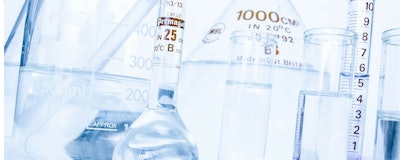
Those in the chemical industry may be aware of the growing interest in green chemistry, the concept of developing chemical processes and products that reduce the production of waste and hazardous substances. This idea is not new, however. In fact, roughly 20 years ago, chemists, Paul Anastas and John C. Warner, published the 12 principles of green chemistry.
These principles are:
- Prevention. It is better to prevent waste than to clean up waste after it is produce.
- Atom economy. The final product should have maximum incorporation of all materials used in a synthetic process.
- Less hazardous chemical syntheses. Avoid using of generating toxic substances during synthetic chemical processes.
- Designing safer chemicals. Chemical products should be as non-toxic as possible while still achieving their desired function.
- Safer solvents and auxiliaries. Avoid auxiliary substances when possible, and use non-hazardous ones when necessary and if possible.
- Design for energy efficiency. Conduct processes at ambient temperature and pressure whenever possible and minimize energy use.
- Use of renewable feedstocks. When practical to do so, use renewable materials rather than non-renewable ones.
- Reduce Derivatives. Extra steps to generate derivatives require additional reagents and generate additional waste, so avoid unnecessary derivative generation.
- Catalysts. Use catalytic reagents that can be used in small quantities to repeat a reaction rather than stoichiometric reagents, which are consumed in a reaction.
- Design for degradation. Chemical products should be designed so that they break down into non-harmful products when their function is complete.
- Real-time analysis for pollution prevention. Real-time, in-process monitoring and control should be developed to prevent pollution before hazardous substances form.
- Inherently safer chemistry for accident prevention. Risks such as explosions, fires, and accidental releases should be minimized whenever possible.[1]
While these principals encouraged chemists to consider the impact of their products and methods, and guided them in how to do so, these principles remained merely hypothetical.
That is until recently.
MilliporeSigma, a life science and technology company, has developed a scoring matrix, called DOZN, that uses Anastas and Warner’s conceptual framework to generate quantitative and actionable results.
DOZN is not the first tool to measure the greenness of chemicals and chemical processes, but it is the first to evaluate them against the 12 principles of green chemistry. The tool provides a consistent and comparative framework that allows users to develop methods and materials in the way that is most energy efficient, produces the least amount of waste, and in general proves to be the least hazardous to humans and the environment.
Samy Ponnusamy, a green chemistry fellow at MilliporeSigma, explains the development of DOZN’s scoring system to Chem.info, saying, “We wanted to differentiate ourselves from other companies offering to perform similar testing, so we decided to take these principles and use them as our basis for evaluating products. We developed a complex algorithm for each principle. Then, using our 300,000 product portfolio, we tested relative greenness against each of the 12 principles, and from there produced an aggregated score from zero to 100, with zero being the best possible score, meaning the most green.”
As you might guess, and as Ponnusamy confirmed, zero is an incredibly unlikely score for a chemical to achieve. However, what is important to understand about chemical greenness testing is that it is relative. As Ponnusamy states, “the goal is to make the process greener, not green.” These sorts of environmental improvements are incremental and take time.
Ponnusamy tells Chem.info that companies are very interested in this type of tool, and that he expects interest to accelerate in the chemical industry moving forward. He added that DOZN 2.0 is already on the docket.
(1) Anastas, P. T.; Warner, J. C. Green Chemistry: Theory and Practice; Oxford University Press: New York, 1998.























